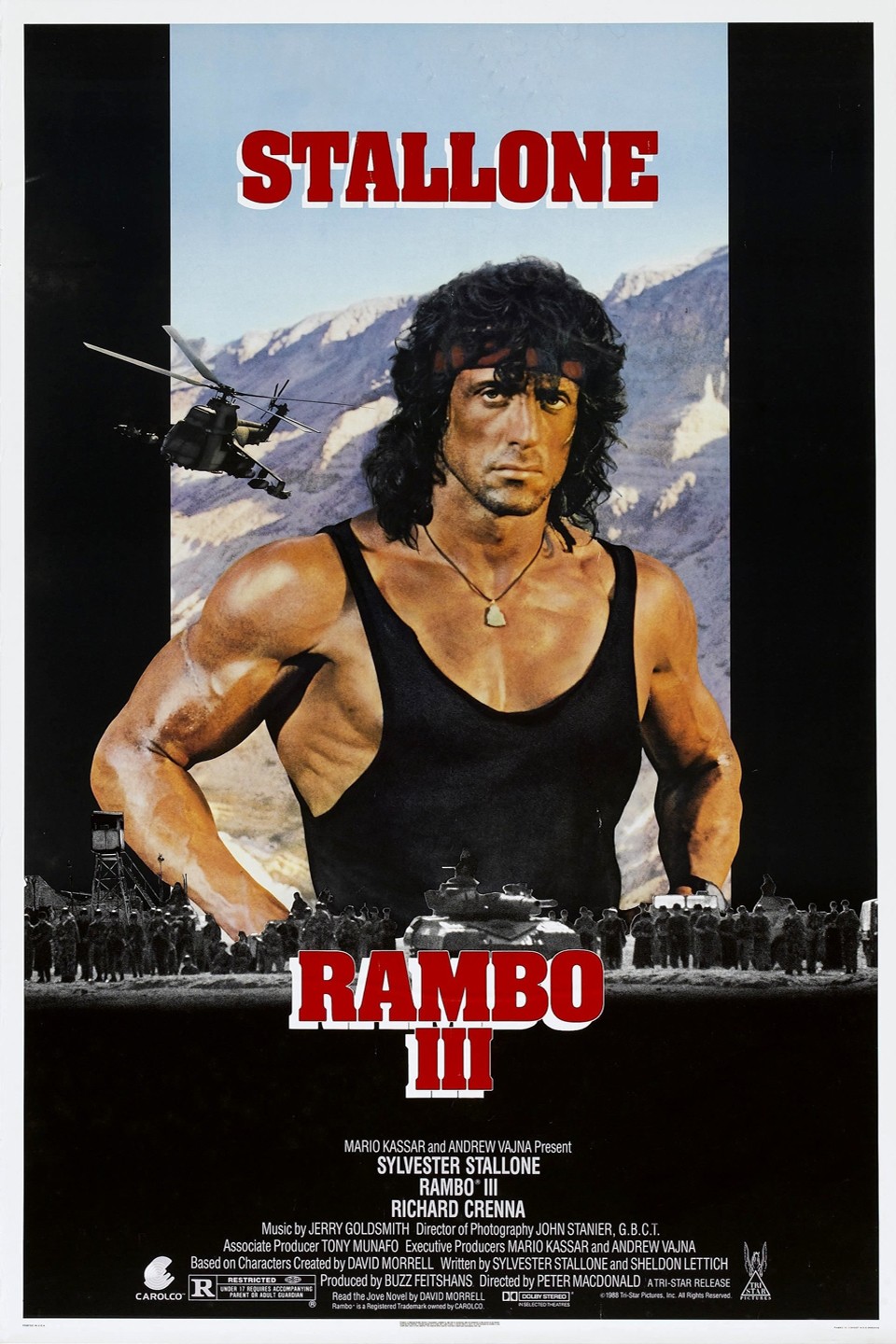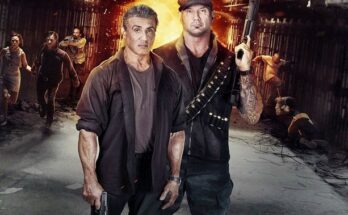Plot Summary – Rambo III (1988)
“Rambo III” (1988), directed by Peter MacDonald, is the third installment in the legendary action franchise starring Sylvester Stallone as John Rambo, the battle-hardened Vietnam War veteran. This time, Rambo’s journey of reluctant heroism takes him to the mountains and deserts of Afghanistan, where he must confront not only his enemies but his own struggle with violence, duty, and loyalty.
The story begins several years after the events of Rambo: First Blood Part II (1985). Having withdrawn from warfare, John Rambo now lives a life of quiet isolation in Thailand, helping Buddhist monks build a temple and earning small amounts of money through stick fighting. Though he has found some measure of peace, his past continues to cast a long shadow.

Rambo’s former commanding officer and close friend, Colonel Sam Trautman (Richard Crenna), visits him with a new mission. The U.S. government plans to supply weapons to Afghan resistance fighters, known as the Mujahideen, who are battling the Soviet Union’s occupation of Afghanistan. Trautman invites Rambo to join him on a covert mission to assist them. Still haunted by his past, Rambo refuses, saying he’s done with war.
Trautman proceeds with the mission alone, but it goes terribly wrong. His team is ambushed by Soviet forces led by the ruthless Colonel Zaysen (Marc de Jonge) and his sadistic subordinate, Sergeant Kourov (Randy Raney). Trautman is captured and taken to a heavily fortified Soviet base deep in the Afghan desert.
When Rambo learns of Trautman’s capture, his sense of loyalty and brotherhood overrides his desire for peace. He travels to Afghanistan and meets with Mousa Ghani (Sasson Gabai), a local arms dealer who reluctantly agrees to guide him to a nearby Mujahideen village. There, Rambo witnesses firsthand the suffering of the Afghan people under Soviet oppression — women and children living in caves, their homes destroyed by air raids.
Despite warnings from Mousa and the resistance leader Masoud, Rambo insists on going alone to rescue Trautman. In a daring nighttime infiltration, he sneaks into the Soviet base, silently eliminating guards and locating his friend. The reunion between Rambo and Trautman is emotional but short-lived — their escape fails, and they are forced to retreat into the desert, pursued by Soviet helicopters and tanks.
With no support and limited weapons, Rambo turns to guerrilla tactics and the help of the local Afghan fighters. In an explosive series of battles, he uses his knowledge of terrain, traps, and raw determination to even the odds. The film features some of the most iconic action sequences of the series — helicopter dogfights, horseback chases through the desert, and Rambo single-handedly taking on entire Soviet battalions.
In one memorable scene, Rambo is severely wounded but uses gunpowder and fire to cauterize his own wound — a brutal testament to his survival instincts. Despite overwhelming odds, he leads a full-scale assault on the Soviet fort to rescue Trautman, culminating in a spectacular battle involving tanks, rocket launchers, and helicopters.
The final showdown pits Rambo and Trautman against Colonel Zaysen. In a thrilling climax, Rambo drives a tank head-on into Zaysen’s helicopter, destroying both vehicles in a fiery explosion but surviving the impact. With Zaysen dead and the Soviet forces defeated, the remaining troops withdraw.
As the dust settles, Rambo prepares to leave, turning down an offer to stay with the Mujahideen. When Trautman asks him what he will do next, Rambo replies simply, “I’ll go home.” It’s a quiet, introspective ending to an otherwise explosive film — showing that even after all the violence, Rambo still longs for peace and belonging.
“Rambo III” is the most action-packed and large-scale entry of the series, known for its intense combat, sweeping desert cinematography, and high-stakes rescue mission. The film also reflects the real-world context of the Soviet–Afghan War, portraying Rambo as a symbol of resistance against tyranny and oppression.
While lighter on the emotional trauma seen in the first film, Rambo III reinforces the character’s enduring themes: loyalty, sacrifice, and the cost of war. With Stallone’s commanding performance and groundbreaking stunt work, it became a hallmark of 1980s action cinema — showcasing one man’s relentless courage in the face of impossible odds.



